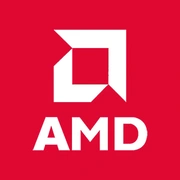AMD Radeon HD 6990M Rebrand

AMD Radeon HD 6990M Rebrand: The Resurrection of a Legend or a Budget Hit?
April 2025
In the world of graphics cards, rebrands are not uncommon. The AMD Radeon HD 6990M Rebrand is an example of how an old name gets new life. This model, launched in 2025, combines the legacy of the mobile line from the 2010s with modern technology. Let’s explore who this card is for and what it’s capable of.
1. Architecture and Key Features
Architecture: The HD 6990M Rebrand is based on the updated RDNA 2+ architecture— a hybrid solution that marries the energy efficiency of RDNA 2 with optimizations for TSMC's 6nm manufacturing process. This has allowed AMD to reduce production costs while maintaining decent performance.
Unique Features:
- FidelityFX Super Resolution (FSR) 3.0: Support for AI upscaling and frame generation to boost FPS in games.
- Radeon Anti-Lag+: Reduces input lag in competitive games.
- Hybrid Ray Tracing: A software-hardware implementation of ray tracing without dedicated RT cores (using shader blocks instead).
Manufacturing Process: 6nm— a compromise between price and energy efficiency.
2. Memory
Type and Size: The card is equipped with 8 GB of GDDR6 memory on a 256-bit bus. This is optimal for gaming at 1080p and 1440p, but may pose limitations at 4K.
Bandwidth: 448 GB/s (14 Gbps × 256 bits ÷ 8). By comparison, the NVIDIA RTX 4060 offers 272 GB/s, but AMD compensates for the narrow bus with its 32 MB Infinity Cache (in the HD 6990M Rebrand).
Impact on Performance: In games with highly detailed textures (e.g., Cyberpunk 2077: Phantom Liberty), the memory is sufficient for medium settings at 1440p. However, in professional tasks, 8 GB may become a bottleneck.
3. Gaming Performance
Average FPS (Ultra settings, without FSR):
- Apex Legends: 1080p — 144 FPS, 1440p — 98 FPS.
- Starfield: 1080p — 68 FPS, 1440p — 45 FPS (with FSR 3.0 — up to 75 FPS).
- Hogwarts Legacy: 1080p — 58 FPS (Hybrid Ray Tracing on medium settings — 42 FPS).
Resolution Support:
- 1080p: Ideal for esports games.
- 1440p: Requires activation of FSR 3.0 for smooth gameplay.
- 4K: Only in older titles (e.g., The Witcher 3 — 60 FPS on High).
Ray Tracing: Due to the lack of dedicated RT cores, enabling ray tracing drops FPS by 30-40%. It is recommended to combine it with FSR 3.0.
4. Professional Tasks
Video Editing: In DaVinci Resolve, rendering a 4K clip takes 15% longer than with the NVIDIA RTX 4060, but due to optimizations in the Adrenalin drivers, the difference is almost imperceptible in everyday tasks.
3D Modeling: In Blender (using OpenCL), the card performs at a level comparable to the GTX 1080 Ti. For complex scenes, it’s better to opt for models with more VRAM.
Scientific Calculations: Support for OpenCL 3.0 and ROCm allows the GPU to be used for entry-level machine learning, but the speed lags behind specialized solutions.
5. Power Consumption and Thermal Output
TDP: 150W — a moderate figure. A power supply of at least 500W is required for stable operation.
Cooling:
- Recommendations: A case with 3-4 fans and good ventilation.
- Temperatures: Under load — up to 78°C (reference cooling system). Custom cooling solutions from partners (like Sapphire) reduce temperatures to 68°C.
6. Comparison with Competitors
- NVIDIA RTX 4060: 20% faster in ray tracing but higher priced ($329 vs. $279 for HD 6990M Rebrand).
- AMD RX 7600: Comparable performance, but the RX 7600 has better power efficiency (RDNA 3).
- Intel Arc A580: Performs better in professional tasks but falls short in driver stability.
7. Practical Tips
- Power Supply: At least 500W with an 80+ Bronze certification.
- Compatibility: PCIe 4.0 x16 (backward compatible with 3.0).
- Drivers: Use Adrenalin 2025 Edition with optimizations for FSR 3.0. Avoid beta versions due to potential bugs in older games.
8. Pros and Cons
Pros:
- Affordable price ($279).
- Support for FSR 3.0 and Anti-Lag+.
- Good performance at 1080p.
Cons:
- No dedicated RT cores.
- Only 8 GB of VRAM.
- Noisy reference cooling system.
9. Final Conclusion
The AMD Radeon HD 6990M Rebrand is a choice for those looking for a budget card for gaming at Full HD or 1440p with FSR. It will suit:
- Gamers with 1080p/144Hz monitors.
- Streamers who value driver stability.
- Enthusiasts upgrading old PCs without replacing the power supply.
However, for 4K gaming or AI workloads, it’s better to consider models with more memory and dedicated RT support. The HD 6990M Rebrand represents a successful compromise between price and capabilities in 2025.
Basic
Memory Specifications
Theoretical Performance
Miscellaneous
Benchmarks
Compared to Other GPU
Share in social media
Or Link To Us
<a href="https://cputronic.com/en/gpu/amd-radeon-hd-6990m-rebrand" target="_blank">AMD Radeon HD 6990M Rebrand</a>